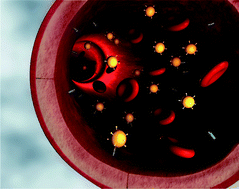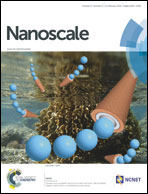Transport of nanoparticles through the blood–brain barrier for imaging and therapeutic applications
Abstract
A critical problem in the treatment of neurodegenerative disorders and diseases, such as Alzheimer's and Parkinson's, is the incapability to overcome the restrictive mechanism of the blood–brain barrier (BBB) and to deliver important therapeutic agents to the brain. During the last decade, nanoparticles have gained attention as promising drug delivery agents that can transport across the BBB and increase the uptake of appropriate drugs in the brain. In this study we have developed insulin-targeted gold nanoparticles (INS-GNPs) and investigated quantitatively the amount of INS-GNPs that cross the BBB by the receptor-mediated endocytosis process. For this purpose, INS-GNPs and control GNPs were injected into the tail vein of male BALB/c mice. Major organs were then extracted and a blood sample was taken from the mice, and thereafter analyzed for gold content by flame atomic absorption spectroscopy. Results show that two hours post-intravenous injection, the amount of INS-GNPs found in mouse brains is over 5 times greater than that of the control, untargeted GNPs. Results of further experimentation on a rat model show that INS-GNPs can also serve as CT contrast agents to highlight specific brain regions in which they accumulate. Due to the fact that they can overcome the restrictive mechanism of the BBB, this approach could be a potentially valuable tool, helping to confront the great challenge of delivering important imaging and therapeutic agents to the brain for detection and treatment of neurodegenerative disorders and diseases.


 Please wait while we load your content...
Please wait while we load your content...